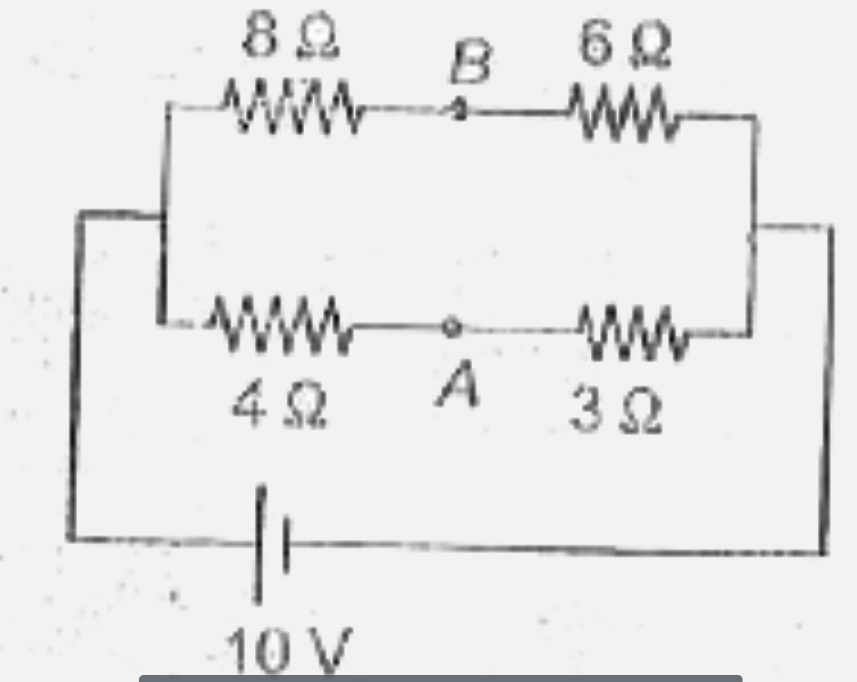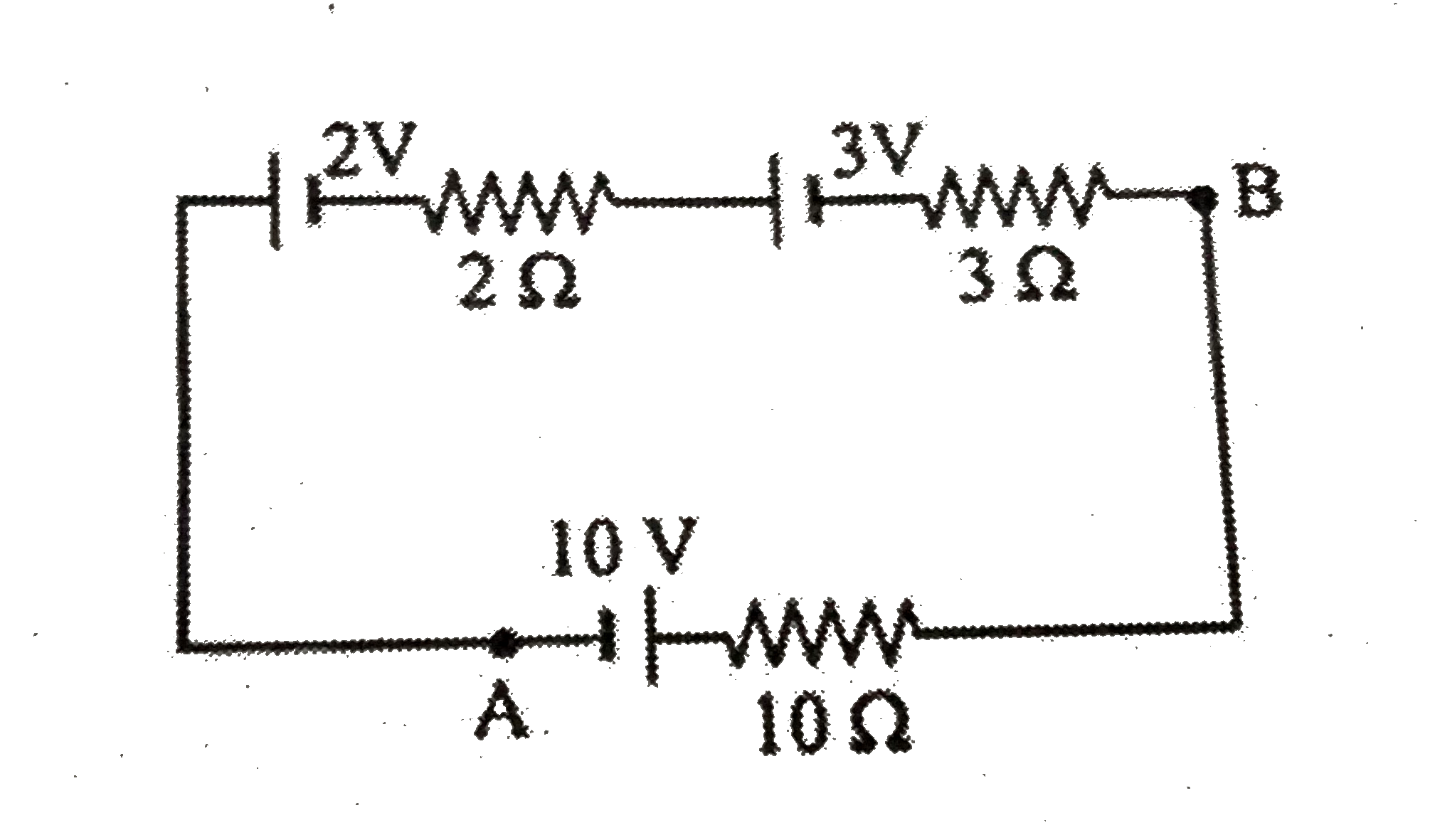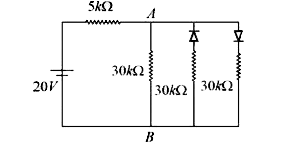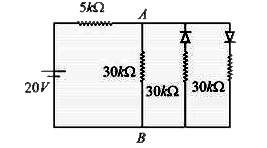The minimum potential difference between the base and emitter required to switch a silicon transistor 'ON' is approximately
1 V
3 V
5 V
4.2 V
The correct Answer is:A
To switch on the transistor, the emitter- base junction of a transistor is forward biased while collecter- base junction is reverse biased. The cut-off voltage for silicon is 1V, so to switch on a silicon transistor a potential difference of 1 V approximately is required between the base and emitter.
Topper's Solved these Questions
- SEMICONDUCTORSBook:RESONANCE ENGLISHChapter:SEMICONDUCTORSExercise:Exercise 2
Explore 16 Videos
- REVISION DPPBook:RESONANCE ENGLISHChapter:REVISION DPPExercise:All Questions
Explore 463 Videos
- SIMPLE HARMONIC MOTION Book:RESONANCE ENGLISHChapter:SIMPLE HARMONIC MOTION Exercise:Advanced Level Problems
Explore 13 Videos
Similar Questions
The potential difference between points A and B is

View SolutionThe potential difference between points A and B is

View SolutionThe potential difference between points A and B is

View SolutionIn the figure potential difference between A and B is :

View SolutionIn the figure, potential difference between A & B is

View SolutionIn the figure, potential difference between A & B is

View SolutionIn the figure, potential difference between A & B is

View SolutionZeta potential is the potential difference between
View SolutionThe potential difference between the cathode. And the target electrod in a coolidge tube is 24.75 kV. The minimum wavelength of the emitted X-rays is
View SolutionThe dc common emitter current gain of a n-p-n transistor is 50. The potential difference applied across the collector and emitter of a transistor used in CE configuration is, VCE=2V. If the collector resistance, RC=4kΩ, the base current (IB) and the collector current (IC) are
View Solution

